

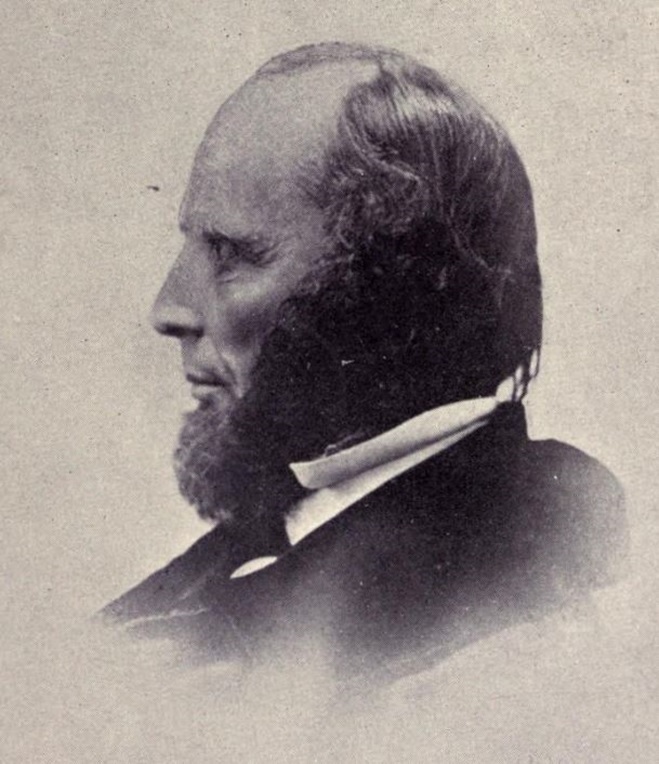
Charles Grandison Finney – Father of modern revivalism and the leading figure of the Second Great Awakening
Introduction
Charles G. Finney’s (1792-1875) unique methods of evangelism earned him the title of the “father of modern revivalism.” His methods paved the way for other mass-evangelists, like Dwight L. Moody, John W. Chapman, Billy Sunday, and Billy Graham, who adapted and built upon Finney’s methods.
Background Information
With this revival account being one in a sequence of revivals during the life of Charles G. Finney, we recommend reading them in chronological order:
► 1824 Evans Mills German Settlement Revival
► 1824 Antwerp, New York Revival
► 1824 Revival at Perch River and Other Locations
► 1825 Revival in Gouverneur, New York
► 1825 Revival in De Kalb, New York
► 1825 Revival in Western, New York
► 1825 Revival in Rome, New York
► 1826 Revival in Utica, New York
► 1826 Revival in Auburn, New York
► 1826-1827 Revival in Troy, New York
► 1827 New Lebanon & Stephentown Revivals
► 1827-1829 Revival at Wilmington and Philadelphia
► 1829 Reading, Pennsylvania Revival
► 1829 Lancaster, Pennsylvania Revival
► 1829 Columbia, New York Revival
► 1830 New York City Revival
► 1830-1831 Rochester, New York Revival
► 1831 Revivals in Auburn, Buffalo, Providence & Boston
► 1832 New York City Revival
► 1835-1840 Revivals in Oberlin, Ohio
► 1841-1842 Boston & Providence Revivals
► 1842 Rochester Revival
► 1842-1843 Revivals in Oberlin, New York, and Boston
► 1849 Revivals in Houghton, Birmingham, and Worcester
► 1850-1851 London, England Revival
► 1851-1853 Revivals in Oberlin, New York City, Hartford, & Syracuse
► 1853-1855 Revivals in Ohio & New York
► 1855-1856 Rochester Revival
► 1856-1858 Boston Revival (Third Great Awakening)
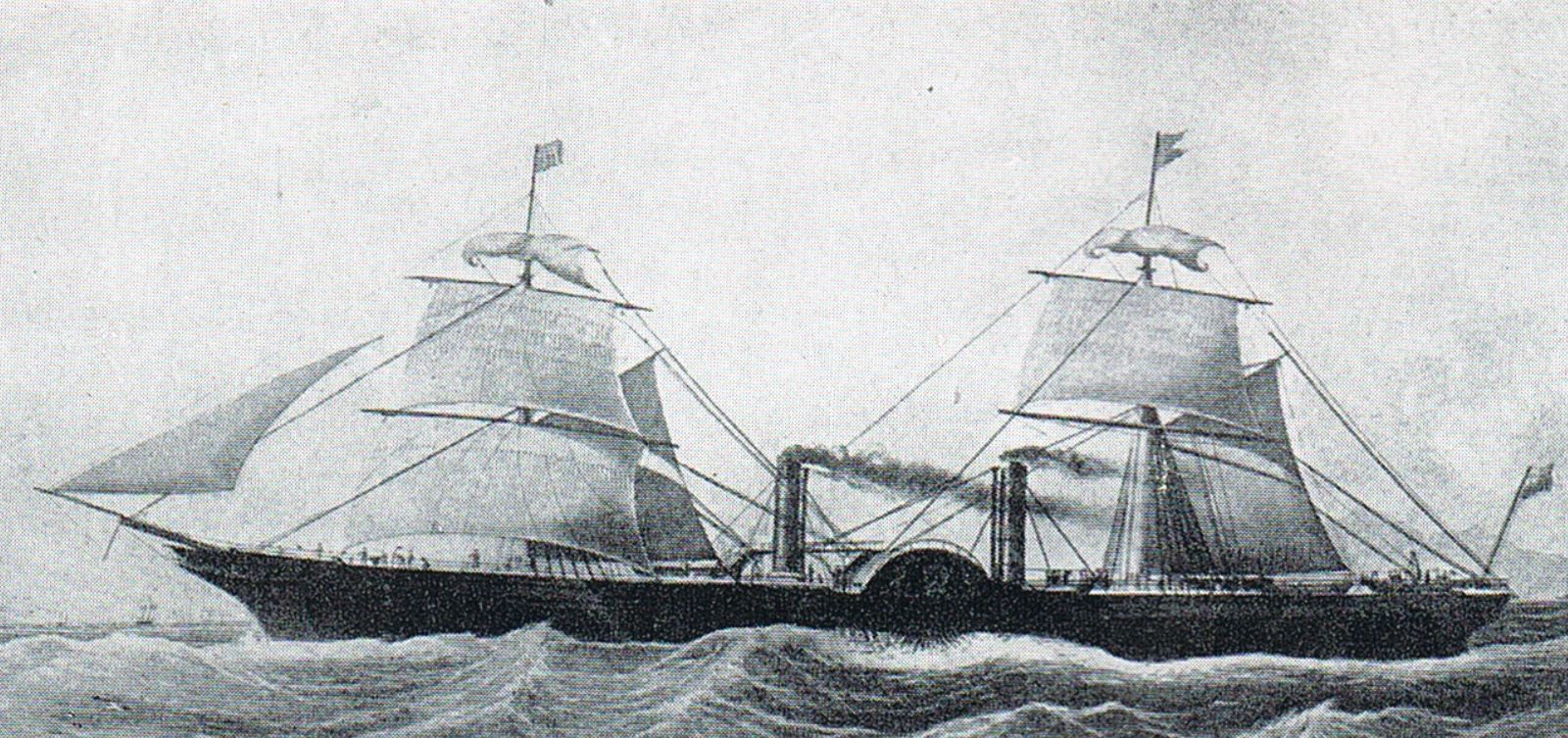
RMS Persia—the ship Finney traveled to England on
From Oberlin, Ohio, to England
In the middle of December 1858, the Finneys left their home in Oberlin, Ohio, and began their journey to England. They stopped over in Rochester, New York, to visit family, then made their way to the port in New York, where they embarked on the RMS Persia, departing on December 22, 1858.
 Arrival in England
Arrival in England
The RMS Persia landed at Liverpool on January 1, 1859, and from there the Finneys traveled to Houghton, Huntingdonshire, to link up with Potto Brown, the same businessman they had worked with during their first visit to England (1849 England Revivals).

Invitations from Throughout England
Upon Finney’s arrival in England he immediately began receiving invitations from various locations, inviting him to come and preach in their cities. He set those requests to the side for the time being and focused his attention on the towns of Houghton and St. Ives, with his efforts being rewarded.
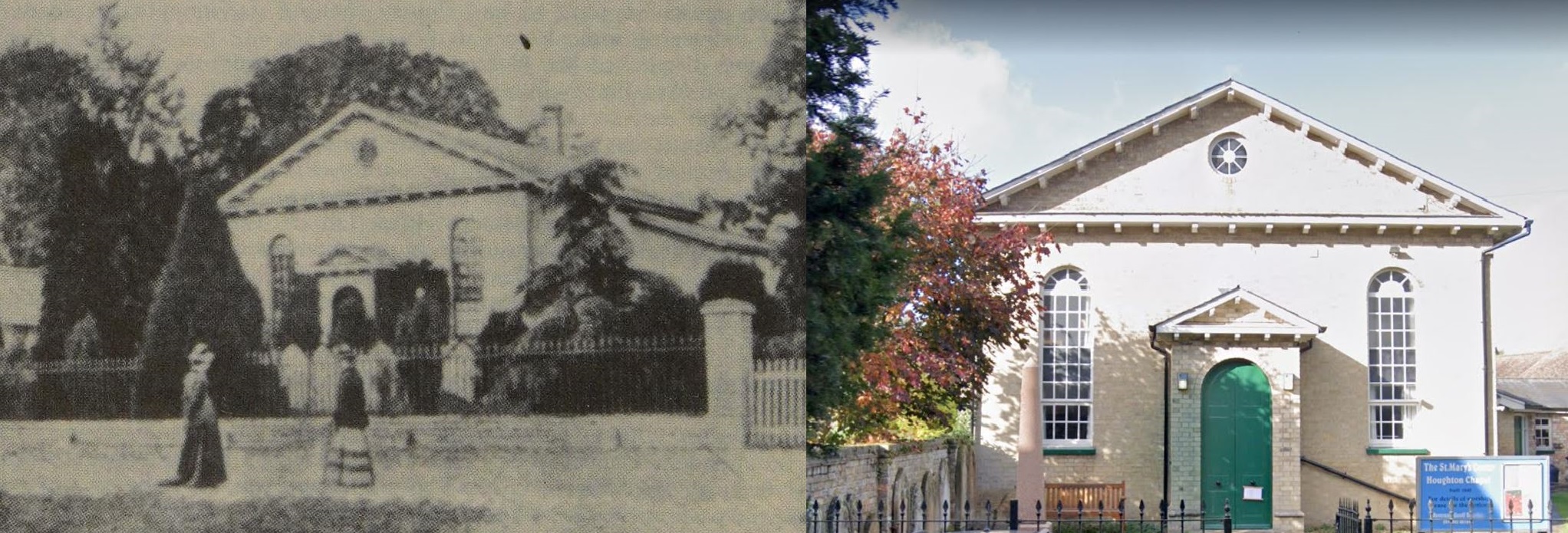 Houghton Chapel: then and now images
Houghton Chapel: then and now images
During Finney’s first visit to England (1849 Revivals in Houghton, Birmingham, and Worcester), he “saw precious revivals” in Houghton, which he referred to as a “very interesting work of grace.” The neighboring town of St. Ives, however, did not experience revival at that time.
Revival in St. Ives
During this visit to England, Finney gave attention to St. Ives, where he preached in a lecture hall, as the Congregational church was “very small and incommodious,” having seating for only 1,000.
His efforts in St. Ives were immediately rewarded, as the “revival took a powerful effect there,” leading to the construction of a new church building and turning the spiritual atmosphere of the town completely around.
In addition to preaching in Congregational churches, Finney also preached in the Methodist chapels. His wife, Elizabeth, was busily engaged holding meetings specifically for women.
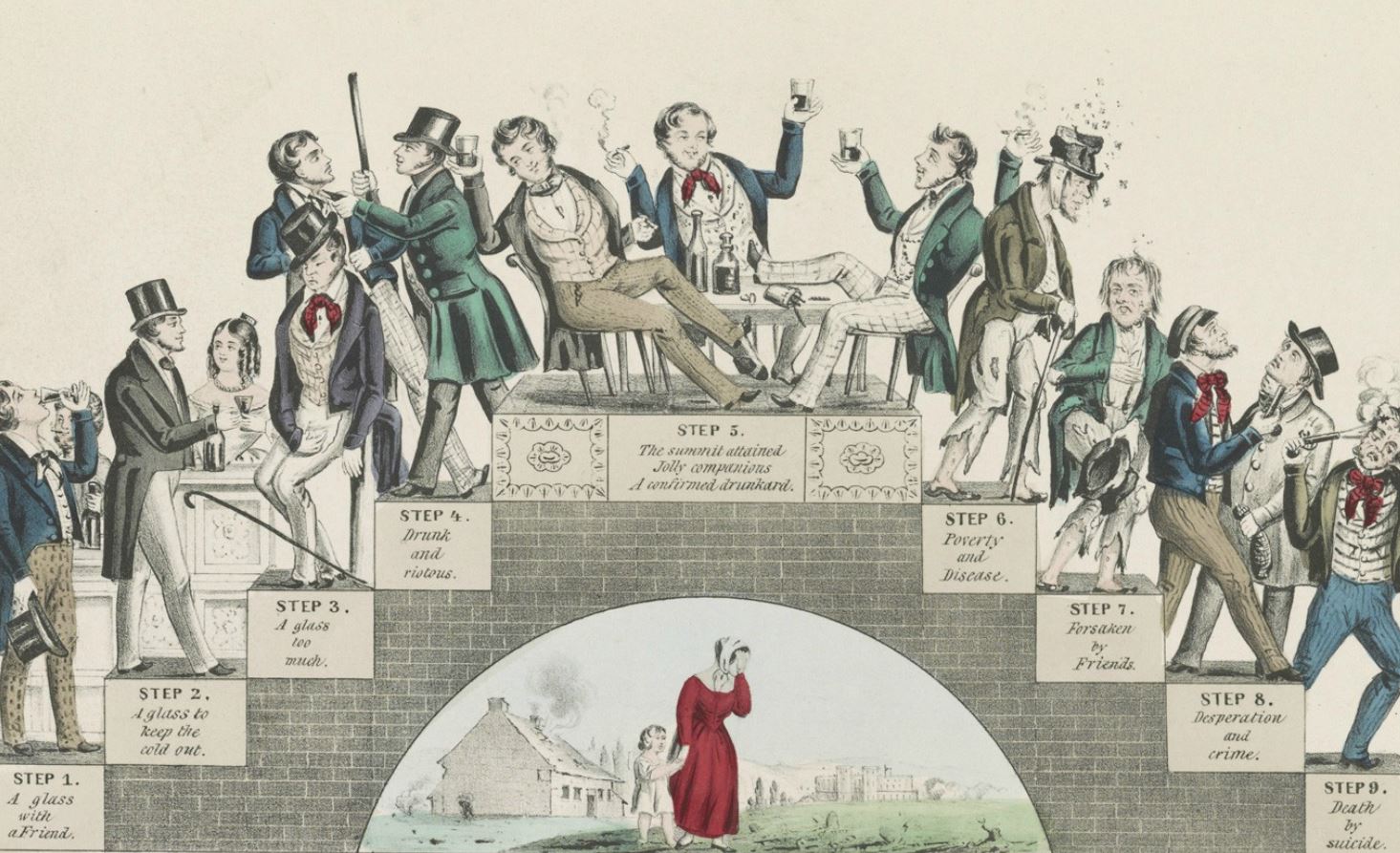
“The Drunkard’s Progress”: promotional material for the Temperance Movement
Finney in London
The largest Baptist church in London, Borough Road Chapel, was pastored by Rev. James Harcourt, a minister who had previously pastored the Houghton Chapel during Finney’s 1849 Houghton, England Revival. Harcourt had received the invitation to take over the pastorate at London’s Borough Road Chapel in 1857.
Having such a good relationship with Harcourt, Finney accepted his invitation to come and preach at the London church. Upon his arrival he found that the congregation had been feuding over the subject of temperance.
The congregation and pastor had become demoralized through the infighting, yet upon Finney’s arrival he set to work doing what he could to restore and build up the congregation, while his wife went to work among the women of the congregation.
Revival at Borough Road Chapel
As the Finneys poured themselves into the people, it wasn’t long before “the Spirit of God was poured out,” and people came under such conviction of their sins that they began confessing those sins to one another. Confession was made and people were reconciled. Differences were settled and the congregation became completely changed, with their hearts becoming “cemented together in love.”
Elizabeth Finney wrote in her journal about the first service that her husband preached in at the Borough Road Chapel:
Congregation large in the morning—Seats in the aisles…. In the evening hundreds went away—house would not hold them—House very solemn—More than 50 inquirers [converts to Christ].
Finney started preaching at Borough Road Chapel on Sunday, February 27, 1859.
► He preached twice on Sundays.
► He preached every Tuesday – Friday evening.
► Elizabeth Finney held meetings for women every day from 3-4 p.m., Tuesday – Friday.
Conversion Numbers
Finney was not in the habit of keeping conversion records. He left those details in the hands of the newspapers and local churches. When he mentioned conversions, he always used vague terms, like what we read here:
The conversions in Brother Harcourt’s congregation were numerous. I say his congregation, I mean, of course, those who attended his meetings; for I believe the number of professedly unconverted sinners was very small previous to my arrival. But the house immediately filled up, and was filled to its utmost capacity very soon after our meetings commenced. I do not know, and never shall know in this world, the numbers of conversions that occurred there, although after the church got into the work they multiplied on every side.
No less than 10 newspapers carried the news of this powerful revival. One of them, The Beacon, wrote on March 19, 1859:
The great American revivalist, Professor Finney, known as the star of Oberlin College, is attracting eager audiences almost every evening in the Baptist Chapel…
As Finney was making plans to leave London, the church held a farewell meeting for him on April 18, 1859. A newspaper, The Freeman, made these statements about that meeting:
From the statements [testimonies] that were made it is evident that the labours of Mr. and Mrs. Finney have been attended by the Divine blessing to a great extent. Many professors of religion have been quickened into new life, backsliders have been restored, and hardened sinners have been melted into penitence and led to Christ.
One year after Finney left London he received a letter from Harcourt, saying:
The work goes on and increases, and that not a week passes without conversions.
Expectations of the London Congregation after the Revival
► If conversions were not occurring every week, the people knew something was wrong.
► They knew that a praying atmosphere was indispensable.
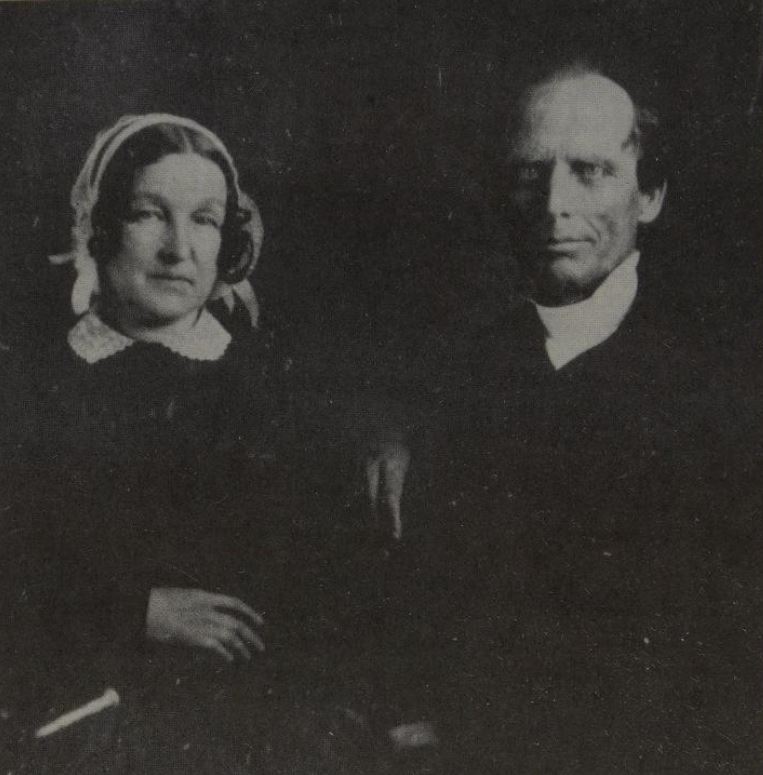
Charles Finney and Elizabeth, his second of three wives. His wives accompanied him on his ministry trips. Elizabeth also ministered to various mission organizations and women’s groups.
Finney Returns to Houghton
On April 21, 1859, the Finneys returned to Houghton to recuperate at the home of Potto Brown. After a period of rest, Finney began preaching again in the Temperance Hall.
After a few weeks’ stay at the home of Potto Brown, the Finneys were invited to reside in the home of a medical doctor (Michael Foster), whose home was three miles away in Huntingdon.
After a couple of days in Huntingdon, Finney began preaching, being supported by a handful of churches of different denominations. All of them were unified and worked in conjunction to carry the work forward.
Sermon about Hailstorms
The largest facility in the area, Temperance Hall, was used for the services and it was always filled to capacity. On Sunday night, May 29, Finney preached a sermon in which he vividly painted a picture of the hailstorms that were frequently experienced in America. He used the Word of God in a way that resembled one of those hailstorms. That sermon shredded and destroyed the lies that were keeping people from turning to Jesus.
Elizabeth Finney wrote in her journal about that sermon:
It was a tremendous sermon—Many seemed in haste to receive Christ—hands stretched out by many before any test asked—Many inquirers it seemed as if they would not leave—men in tears…
Dr. Michael Foster, the owner of the home the Finneys were staying at in Huntingdon, had a 29-year-old son who was also a doctor. That young man had become highly resistant to the Gospel, and it led the Finneys to intercede extensively on his behalf.
On Sunday night, May 29, Foster’s son was present when Finney delivered the sermon about the hailstorm, and it left a deep impression on him.
A few hours after the sermon, at about 10 p.m., a tremendous storm of hail, thunder, and lightning struck the area, with torrential rains—something uncommon in that area. The young Foster was so overcome by conviction of his sins that he could not sleep. His sense of guilt was so intense that he felt he was soon to be swept into hell.
The power of God went through that home, and not only converted that young doctor, but also all of the children in that family.
Finney wrote a few years after this revival:
In my two visits to England I have reason to believe that many hundreds were converted to Christ,—I suppose I might without extravagance say thousands; and in both cases it was Mr. Brown more than any other, and all other influences together, aside from the Holy Spirit, that decided me to go… How much England owes to his exertions for Christ, the Day of Judgment can alone reveal. Upon the whole, he was one of the most remarkable Christian men I ever knew.
Ministry in London
Following the ministry in Huntingdon, the United Methodist Free Churches in London invited Finney to come and minister among their 14 churches, so he left Huntingdon for London the third week of June, 1859. While in London he preached in different churches during the week, Tuesday through Friday, and twice on Sundays. The revival spread, and “increased till late in the summer.”
The Finneys left London on Wednesday, August 10, 1859, for a voyage up the coast to Edinburgh, Scotland, where they began another round of revivals [1859-1860 Scotland & England Revivals].
Primary Sources
► Chapter XXXIV: The Memoirs of Charles G. Finney by Charles G. Finney
► The Memoirs of Charles G. Finney: The Complete Restored Text by Charles G. Finney
Secondary Sources
► Charles G. Finney by Wikipedia
► Charles Grandison Finney & the Second Phase of the Second Great Awakening by Christian History Institute
► Great Revivals and the Great Republic by Warren Candler
► History of American Revivals by Frank G. Beardsley
► Man of Like Passions: The Life Story of Charles Grandison Finney by Richard E. Day
► Memoirs of Revivals of Religion by Charles G. Finney
► The Fervent Prayer: The Worldwide Impact of the Great Awakening of 1858 by J. E. Orr
► The Story of Oberlin by Delavan L. Leonard
Return to List of Revival Stories
Chet & Phyllis Swearingen:
Office: (260) 920-8248
romans1015@outlook.com
Beautiful Feet
P.O. Box 915
Auburn, IN 46706

